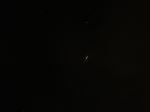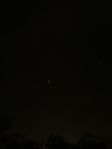We have moved! Please visit us at our new website http://www.skywatchersindia.com
Recent programs:
SWAN remained an integral part of the academics of the nature Study camp organized by a lolcal NGO at Indo-Bhutan Border on thew 28th December. The night long program was an elaborate one to give the senior campers an idea about general astronmy, its role in Human civilization , stellar dynamics, Different kinds of orbits and then live viewing of Moon, Jupiter, M42, M31 etc through telescopes.
Under own popularization program, conducted a large scale Free Astronomy Orientation program at Murty near Garumara National Park on 18th Dec. Had near 100 students along with their guardians. Demonstration on general role of astronomy on Human civilization and its development, to be followed by a self made audio Visual presentation on India’s lunar Mission Chandrayaan-1 was there along with live telescopic observation of Jupiter.
The live webcast of TLE 10th Dec remained a great success. Cloudy sky could not diminish the spirit. Got image feed from our member Kolkata (586km from our webcast location) and channeled that along with live deliberation, narration, demonstration etc. had 25,000 viewers from around 60 countries.
We had arrangement to show and compare the shadow casting character during Lunar Eclipse and normal termination on Lunar surface.
Thanks to all our viewers for being with us.
We are getting prepared to come again LIVE with the Venus Transit in June 2012.
Once again SWAN will webcast the Total Lunar Eclipse of 10th December 2011 from Siliguri.
IST 06:00:00PM (UT 12:30:00 hr) to continue till IST 10:59:57 PM. (UT 17:29:57).
Webcast URL:
http://www.livestream.com/swansiliguri
http://www.skywatchersindia.com
For full screen WEBCAST viewing, click here
Previously Recorded Sessions
Vodpod videos no longer available.
OR
Click Here to get the live WEBCAST window from http://www.livestream.com/swansiliguri.
Our first Live webcast was on the 15th June 2011 total lunar Eclipse. The webcast came out to be one of the largest viewed webcast of the event- as reported by media. Our next Lunar Eclipse webcast will be on the 10th December 2011. The webcast will be visible through our site http://www.skywatchersindia.com or our webcast channel www.livestream.com/swansiliguri . Though the Lunar eclipse is going to begin at Indian Standard Time (IST) 05:03:36PM (UT 11:33:36), our casting will start following it at IST 06:00:00PM (UT 12:30:00 hr.) Because, at 88 Plus Degree Longitude, we are at 5.5hr time zone and will have the eclipse to begin at very low altitude of Moon over horizon (near 4 degree only) which is not suitable for imaging. So, our webcast will start flowing over net with Moon at around 16 degree altitude and 15 minutes before the beginning of the visually appealing Umbral phase of the eclipse. However, after covering entire Umbra phase, the webcast will continue till the end of the Penumbra phase of the eclipse at IST 10:59:57 PM. (UT 17:29:57).
So, the webcast begins at IST 06:00:00PM (UT 12:30:00 hr) to continue till IST 10:59:57 PM. (UT 17:29:57).
Webcast URL:
http://www.livestream.com/swansiliguri
http://www.skywatchersindia.com
We invited all to visit SWAN site to share our joy of observing Total lunar Eclipse from Siliguri, West Bengal India on the 15th June 2011.
The whole 4 hr long webcast session was divided into parts. Beside the available live feed, recordings of the previously aired portion of the event were also stored in the library section in the page bellow the webcast screen.
Like, when one found the Greatest Eclipse going live on screen, he had recording of the previously shown video of P1 or P2 at library section.
Shooting of Solar Transit of International Space Station
Shooting International Space Station:
The challenging mission has been taken up. The first trial run will be on the 24th of January 2011 at 14th hour from Canal Road, Siliguiri.
http://www.wikimapia.org/#lat=26.6809395&lon=88.5348701&z=17&l=0&m=b
IRIDIUM FLARE OBSERVATION ON 8TH NOVEMBER 2010.
Event coordinator: Sudip Kr Sen and Avik Chakrovorty
Expected Mag: -8
Location: Tentatively near Bagdogra
Time: Evening
Event planning: Naked eye observation and Shooting with Digital as well as Analog cameras.
EVENT OUTCOME:
Successfully captured the event with analog and Digital cameras in still and Video. Total 4 senior and 3 junior SWAN members were there at the location. The compressed version of the picture can be found at-
XXXXXXXXXXXXXXXXXXXXXXXXXXXXXXXXXXXXXXXXXXXXXXXXX
SKY ORIENTATION PROGRAM FOR STUDENTS-
AT LATAGURI- NEAR GARUMARA WILDLIFE SANCTUARY.
DATE: 31ST OCTOBER 2010.
Around 110 students of 9th to 12th standard are likely to take part in it. The whole session will have-
- A outdoor session with basics of SKY WATCHING, Planetary motion, Apparent stellar movement on Skydome.
- Indoor session with audio visual presentation on Space Exploration.
- Early morning outdoor session on Lunar observation with Telescope and Binocular.
EVENT OUTCOME Date of Posting: 2nd November 2010
Over 110 students, their teachers and 5 SWAN members spent the evening with audio visual Demonstration on Sky and its many facets. Sky remained overclouded through out the whole night. We had to discard our plan to shoot the sky there that normally remains crystal clear during this season.
Students were given specially prepared 30 questions to answer them before the session and again after the session. The difference in score of the two sets of answers was to tell us about how well the students could take up the session.
xxxxxxxxxxxxxxxxxxxxxxxxxxxxxxxxxxxxxxxxxxxxxxxxxxxxxxxxxxxxx
Iridium Flare observation and recording. The first IR flare camp after 2010 Summer and Monsoon.
Post date: 22nd Sep 2010.
Event Date: 30th Sep. 2010
Time: Tentative: 18:40hr
Location: 7km East of Siliguri Town. (To be finalized)
Event Coordinators: Avik Chakroborty and Tanmoy Goswamy.
Interested SWAN members may communicate via our usual SWAN mailing network. For anyone else interested- please contact before 27th Sep through ‘contact us’ link.
Event outcome: Post Date: 30th September 2010.
The event remained successful with excellent shots taken by Avik. Importantly, many new members were there in the trip.
The new comers were shown Jupiter and its moons, Andromeda Galaxy through a Meade 10 X 50 Binocular.















